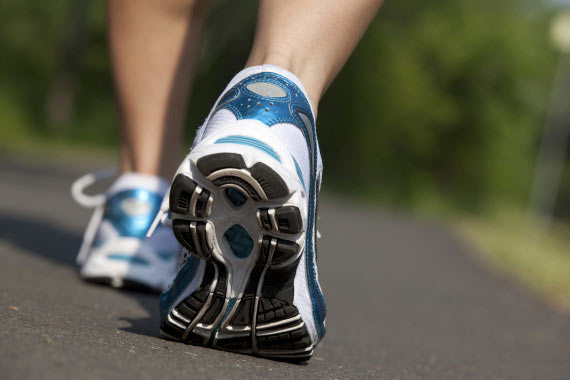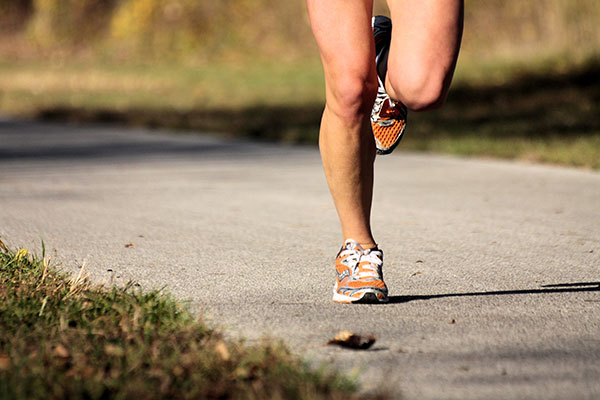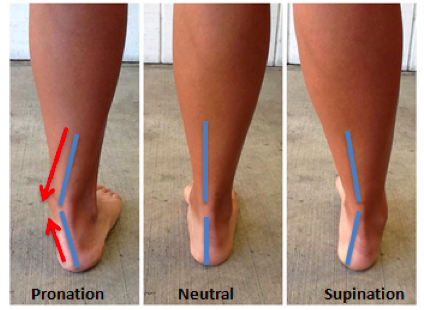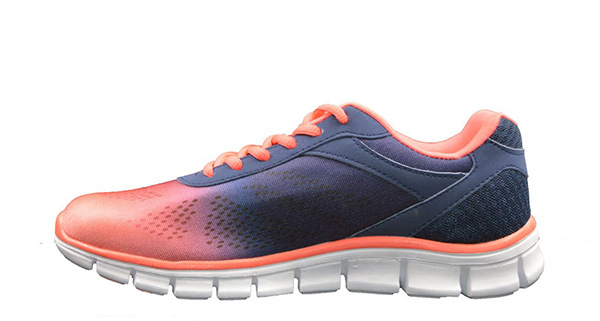Essential Guide to Buying Your Next Pair of Running Shoes
 Do you find it hard knowing which are the best running shoes for you? Incorrect running shoes are a very common contributor to many injuries that we see at Sport and Spinal Physiotherapy and Your Podiatry Canberra. Be they too old and worn out or just the wrong type of shoe for your foot, too many of us are wearing the wrong footwear! Many shoe stores have not enough knowledge or training to properly identify your foot type and the correct running shoes for you. Even specialty stores can have inexperienced staff and, although they talk the talk, you can leave the store with the wrong pair of running shoes. This is why I want you to know what to look for.
Do you find it hard knowing which are the best running shoes for you? Incorrect running shoes are a very common contributor to many injuries that we see at Sport and Spinal Physiotherapy and Your Podiatry Canberra. Be they too old and worn out or just the wrong type of shoe for your foot, too many of us are wearing the wrong footwear! Many shoe stores have not enough knowledge or training to properly identify your foot type and the correct running shoes for you. Even specialty stores can have inexperienced staff and, although they talk the talk, you can leave the store with the wrong pair of running shoes. This is why I want you to know what to look for.
Why Is This Important?
The wrong pair of running shoes can lead to not only ankle and foot pain but also knee, hip, and lower back pain. If you need some advice on how to avoid running injuries, read this article. If you’re serious about your health, exercise or fitness, then make sure you’re in the right shoes. Don’t let ads, magazines, or what your friends are wearing make your shoe choice for you! That’s fine for those cute high heels you want so badly or those tan leather boat shoes you saw some bloke wearing. For causal shoes, sure, do what you want, but for runners or shoes you will exercise in, don’t be stupid. Those ‘70% Off’ Nikes you bought at DFO might not have been the bargain of the century when you start getting a sore knee because your feet need more pronation control.
Lets Talk About Feet
“I have flat feet, “Nah, I have good arches”, “Im an over-pronator”. Most people have an idea that feet come in all shapes and sizes. The shape or certain characteristics of your feet determine what type of shoe you need so lets discuss:
Basic Types of Foot Movement
Pronation is a normal shock absorbing mechanism. Most runners will land on the heel, then the foot rolls forwards and inwards towards the center of the forefoot.
Over-pronation is when you roll excessively to the inside of your foot. This can happen from the heel and/or the forefoot. This causes stress on the knee and shins. It will also cause more wear on the sole of your shoes on the inside area over the forefoot. Heel wear maybe more on the inside or outside in this case.
Excessive supination is rolling too far to the outside of your foot. This is less common than over-pronation but can still cause stress on your tendons, ligaments, and bones as you often have poorer shock-absorption through the foot and lower leg.
Rigid vs. Mobile
Your foot is designed to act as a level (rigid) which propels you forwards and also as a platform (mobile) to adapt to different surfaces. Most people will be dominant in one type or the other.
The rigid foot moves predominantly in a forward and back direction with little side to side movement. This creates a strong push off is sometimes seen with excessive supination. This is seen when your foot bears weight more on the outside and can result in too much stress on the bones, tendons and ligaments of your foot as it doesn’t have good shock-absorption ability. The shoe wear pattern will tend to be more noticeable on the outside of the shoe particularly on the outside and middle of the forefoot.
Shoe Type: A rigid foot type needs a good flexible shoe with great forefoot and rearfoot cushion. There is not a great need for stability here though.
The mobile foot has more movement from side to side at the heel joint (rearfoot) and midfoot. The first contact of the heel is usually on the outside (but occasionally on the inside), then your foot rolls inwards towards the inside of your forefoot. Rolling in can result in over-pronation which can cause foot, shin and knee pain. The shoe wear pattern is often more worn on the inside of the forefoot. Wear in the heel can be more on the inside or the outside.
Shoe Type: A mobile foot needs support! The rearfoot and forefoot must have a stable platform. You may also need an orthotic if the shoe cannot overcome the over-pronation and keep your foot in a neutral position. There is usually a trade off between stability and cushioning. Too much cushion will sacrifice stability and allow your foot to keep rolling inwards as you run.
Pronation is normal and necessary. It is only when there is too much or not enough that problems may arise. If you aren’t having problems, then using devices in your shoes may cause one. However, if you are a pronator and are having knee or shin pain, you may benefit from an orthotic.
Shoe Shape
Running shoes come in two basic shapes: Straight or curved. You may need to try on each type to see which best fits your foot. A straight last will look quite similar to its partner when looking at the bottom, where a curved last will be far easier to tell which is left and right as the shoe will curved towards the big toe. There are varying degrees of these shapes and a modified straight last provides a compromise of both. The shape of the running shoe should reflect the shape of your foot. There should be no pressure areas. The way in which the upper is joined to the midsole is called the Last construction. Most shoes are slip lasted meaning the upper is sewed together and then glued to the midsole. This provides more flexibility but may reduce stability.
Shoe Fit
Shoe fit is important. You dont want to be slipping around inside your shoe but you also dont want to squeeze your foot into a shoe thats just too small. Remember your feet swell and expand when running. Generally 1-1.5cm of toe room is ideal. If you have one foot longer than the other than fit the longer foot. There can be extra room in the toes so long as the shoe fits across the middle of your foot.
Your heel should fit snug to prevent slipping, but not too tight. A strong heel cup will allow less heel roll and provide greater support for over-pronators.
Shoe cushioning
The rigid foot needs cushion! …and flexibility especially in the forefoot. This helps overcome the lack of shock absorption from not enough pronation. The mobile foot needs stability and only enough cushion to take away excessive shock. Remember, too much cushion will allow your foot to over-pronate and decreases stability. Pronators should look for shoes with a medial dual density midsole. These shoes have a harder foam on the inside portion of the shoe which prevents the foot from rolling in too much.
Lets Summarize…
| Shoe Features | Over-pronator | Neutral | Excessive Supinator |
| Heel Counter | Rigid | Rigid | Rigid |
| Forefoot Flexibility | Yes | Yes | Yes |
| Midsole Density | Hard Dual Density | Intermediate | Soft |
| Last Construction | Combination | Slip or Combination | Slip |
| Shape of Last | Straight or Slightly Curved | Slightly Curved | Curved or Slightly Curved |
Hopefully you have found this helpful and now have more knowledge on what sort of running shoes are best for you. If you’re still not sure what your foot type is, or if you are experiencing pain with exercise, you should see you physiotherapist or podiatrist for help. Even better, make sure you attend our workshop on the best running shoes for you at our Gungahlin practice, March 14.
Happy running!
Useful Links
https://www.runnersworld.com/shoe-guide/runners-world-2017-fall-shoe-guide
http://www.asics.com/au/en-au/pronation-guide



